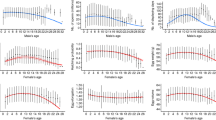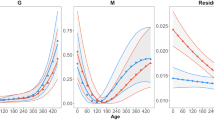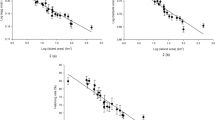Abstract
THERE is considerable controversy about what females gain from mate choice in a lekking species in which males provide no obvious resources. Females may gain direct benefits such as safe copula-tions or increased fertility by mating with particular males, or they may gain indirect benefits for their offspring1–3. It is difficult to look for paternal effects on offspring performance because it is hard to control for any differences in the material and genetic contribution provided by the female and in the environment of the offspring during development; previous experiments have con-trolled for rearing environment but not maternal effects4. Here I report results from a controlled breeding experiment, with females allocated to males at random and all offspring reared under the same conditions, which show that the offspring of successful lek peacocks (Pavo cristatus) with the most elaborate trains grow and survive better under nearly natural conditions.
This is a preview of subscription content, access via your institution
Access options
Subscribe to this journal
Receive 51 print issues and online access
$199.00 per year
only $3.90 per issue
Buy this article
- Purchase on Springer Link
- Instant access to full article PDF
Prices may be subject to local taxes which are calculated during checkout
Similar content being viewed by others
References
Kirkpatrick, M. T. & Ryan, M. J. Nature 350, 33–38 (1991).
Pomiankowski, A., Iwasa Y. & Nee, S. Evolution 45, 1422–1430 (1991).
Iwasa, Y., Pomiankowski, A. & Nee, S. Evolution 45, 1431–1442 (1991).
Norris, K. Nature 362, 537–539 (1993).
Petrie, M., Halliday, T. & Sanders, C. Anim. Behav. 41, 323–331 (1991).
Petrie, M. & Halliday, T. R. Behav. Ecol. Sociobiol. (in the press).
Williams, T. D. Biol. Rev. 68, 35–59 (1994).
Alatalo, R. V., Hoglund, J. & Lundberg, A. Nature 352, 155–156 (1991).
Petrie, M. Anim. Behav. 44, 585–586 (1992).
Møller, A. P. Proc. R. Soc. Lond. B245, 179–182 (1991).
Author information
Authors and Affiliations
Rights and permissions
About this article
Cite this article
Petrie, M. Improved growth and survival of offspring of peacocks with more elaborate trains. Nature 371, 598–599 (1994). https://doi.org/10.1038/371598a0
Received:
Accepted:
Issue Date:
DOI: https://doi.org/10.1038/371598a0
This article is cited by
-
Structural equation modeling of female gait attractiveness using gait kinematics
Scientific Reports (2023)
-
Ordinaries 13: apparent spite & apparent altruism
Journal of Bioeconomics (2023)
-
Relationships between male secondary sexual traits, physiological state and offspring viability in the three-spined stickleback
BMC Ecology and Evolution (2022)
-
Endurance rivalry and female choice jointly influence male mating success in the emerald treefrog (Zhangixalus prasinatus), a lek-chorusing anuran
BMC Zoology (2022)
-
Sexual selection for males with beneficial mutations
Scientific Reports (2022)
Comments
By submitting a comment you agree to abide by our Terms and Community Guidelines. If you find something abusive or that does not comply with our terms or guidelines please flag it as inappropriate.



